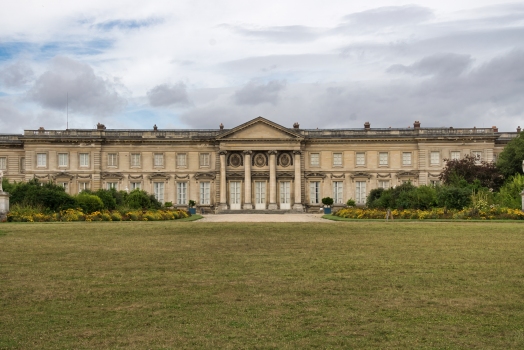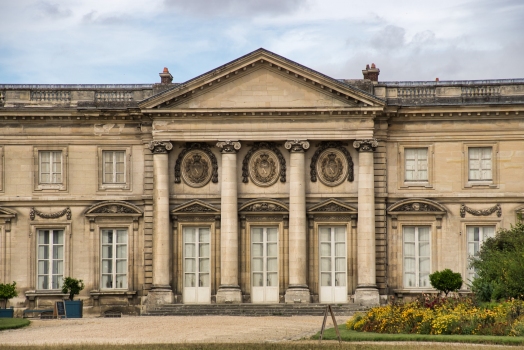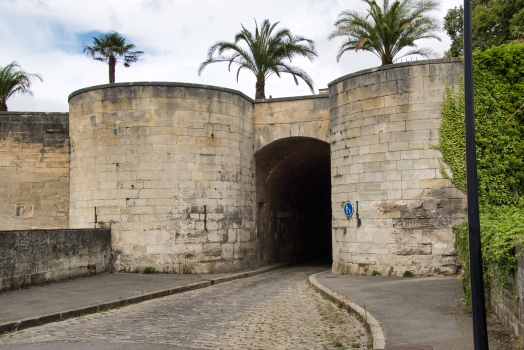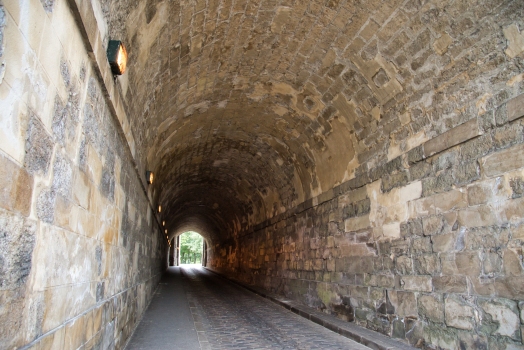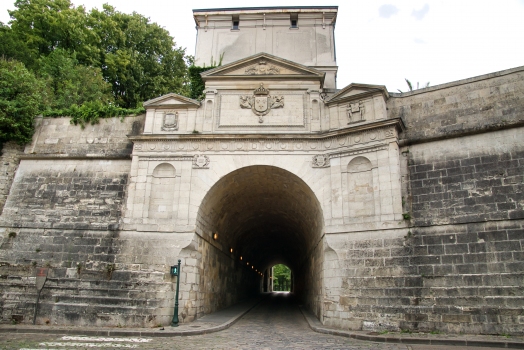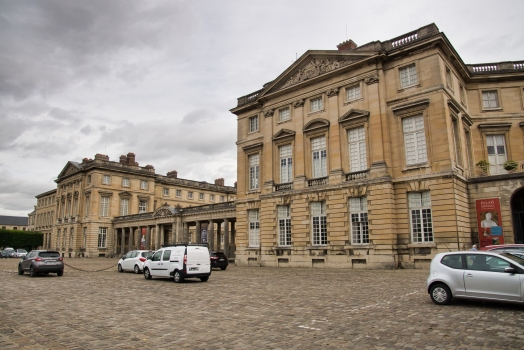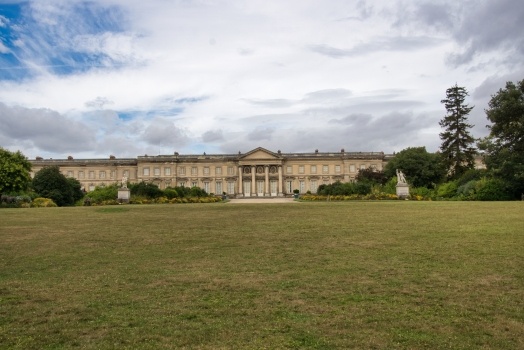General Information
Project Type
| Function / usage: |
Château |
|---|
Location
| Location: |
Compiègne, Oise (60), Hauts-de-France, France |
|---|---|
| Connects to: |
Passerelle du Théâtre impérial de Compiègne (1870)
|
| Coordinates: | 49° 25' 9.12" N 2° 49' 52" E |
Technical Information
There currently is no technical data available.
Excerpt from Wikipedia
The Château de Compiègne is a French chateau, a royal residence built for Louis XV and restored by Napoleon. Compiègne was one of three seats of royal government, the others being Versailles and Fontainebleau. It is located in Compiègne in the Oise department and is open to the public.
Even before the chateau was constructed, Compiègne was the preferred summer residence for French monarchs, primarily for hunting given ist proximity to Compiègne Forest. The first royal residence was built in 1374 for Charles V, and a long procession of successors both visited it and modified it. Louis XIV resided in Compiègne some 75 times. Louis XV was perhaps even more favorably impressed; the Comte de Chevergny described his infatuation: "Hunting was his main passion… and Compiègne, with ist immense forest, with ist endless avenues amongst the trees, with ist stretches down which you could ride all day and never come to the end, was the ideal place to indulge that passion."
In 1750, prominent architect Ange-Jacques Gabriel proposed a thorough renovation of the chateau. Work began in 1751 and was finished in 1788 by Gabriel's student Le Dreux de La Châtre. The ancient town ramparts dictated the château's triangular plan; the resultant building covers about 5 acres (20,000 m²). It is Neoclassical in style, with simplicity and clarity governing both ist external and interior features.
During the French Revolution, the château passed into the jurisdiction of the Minister for the Interior. In 1795 all furniture was sold and ist works of art were sent to the Muséum Central; it was essentially gutted. Napoleon visited in 1799 and again in 1803. In 1804 the château became an imperial domain and in 1807 he ordered it be made habitable again. Architects Berthault, Percier and Fontaine, decorators Dubois and Redouté, and cabinetmakers Jacob-Desmalter and Marcion restored the château. Ist layout was altered, a ballroom added, and the garden was replanted and linked directly to the forest.
The result is an example of First French Empire style (1808-1810), though some traces of the earlier décor survive. The writer Auguste Luchet remarked that "Compiègne speaks of Napoleon as Versailles does of Louis XIV". From 1856 on, Napoleon III and Eugénie made it their autumn residence, and redecorated some rooms in the Second Empire style.
Today's visitors can find three distinct museums within the chateau: the apartments themselves; the Museum of the Second Empire; and the National Car Museum (Le Musée de la Voiture), founded in 1927, with a collection of carriages, bicycles, and automobiles.
Text imported from Wikipedia article "Château de Compiègne" and modified on July 23, 2019 according to the CC-BY-SA 4.0 International license.
Participants
- Ange-Jacques Gabriel (architect)
- Louis Le Dreux de la Châtre (architect)
- Louis-Martin Berthault (architect)
- Denis Le Dreux (architect)
Relevant Web Sites
Relevant Publications
- (2005): Larousse des châteaux. Larousse, Paris (France), pp. 280-282.
- About this
data sheet - Structure-ID
20017165 - Published on:
06/08/2005 - Last updated on:
22/08/2018

